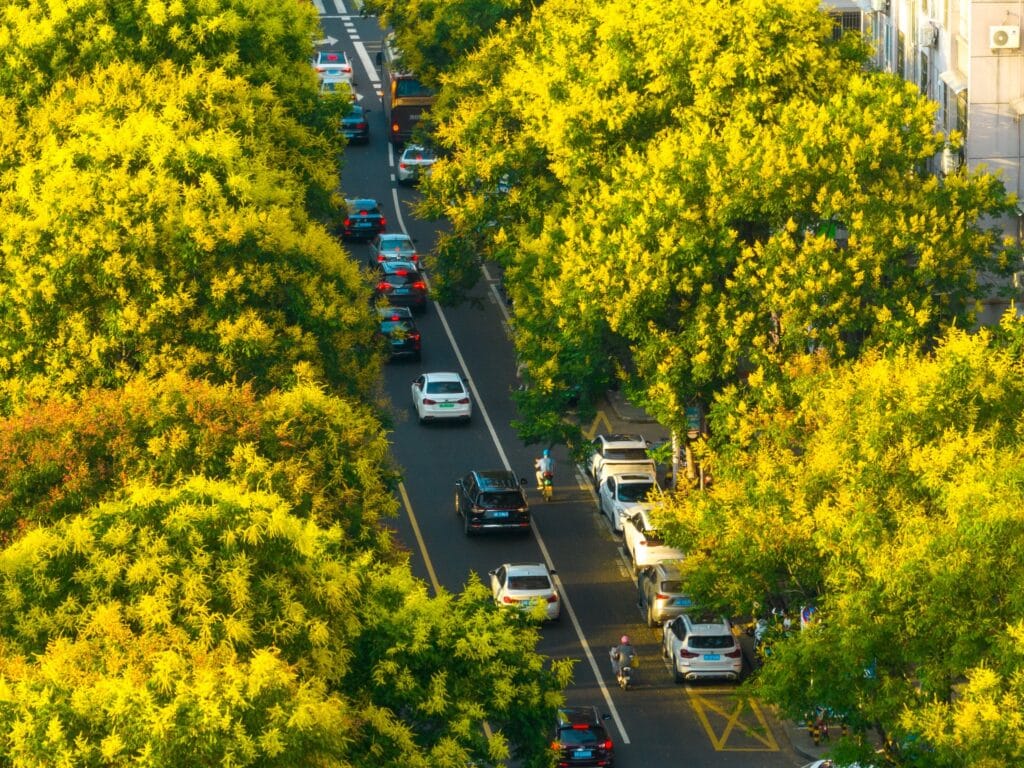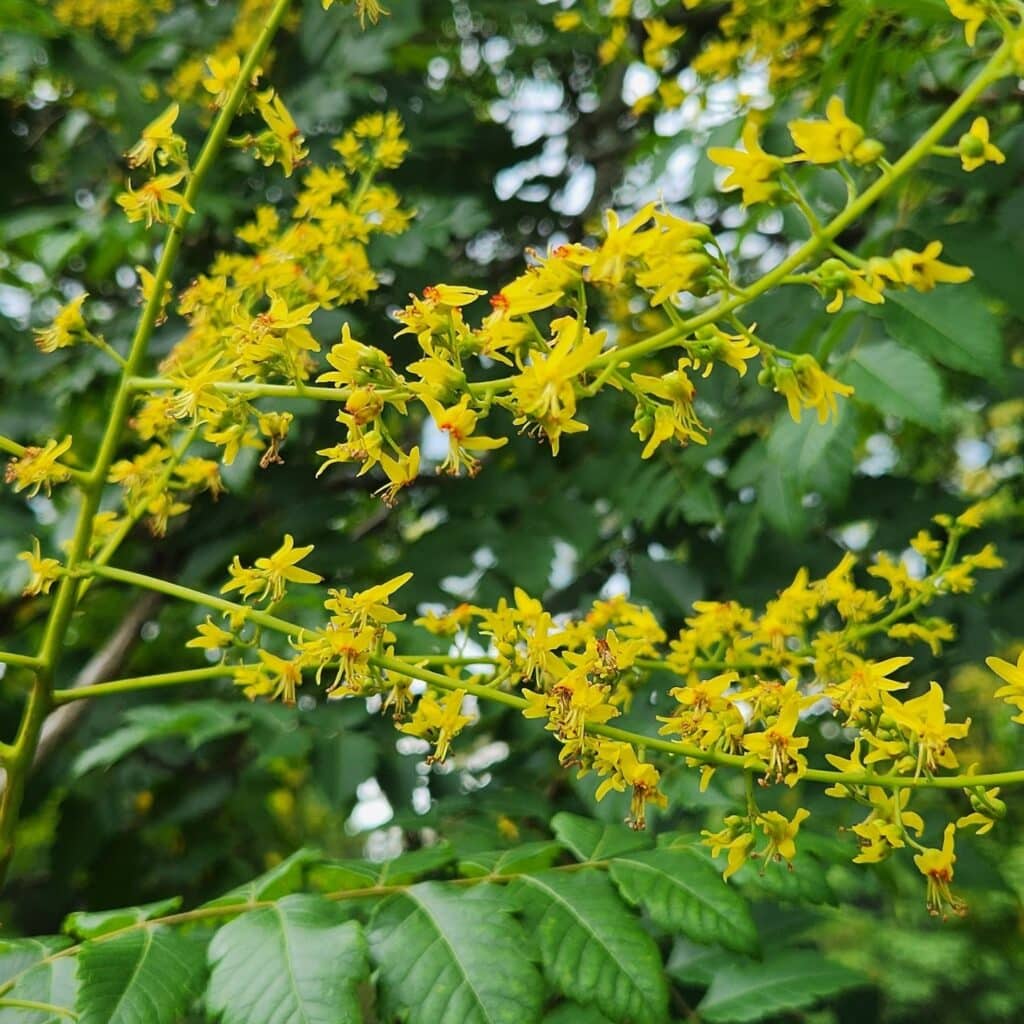Do you fear breaking the law by growing the Golden Rain tree in Florida because it is considered invasive in the state?
Well, you should not be unless you plant a particular Golden rain tree variety.
Let us talk more about growing the Golden Rain tree in Florida and what challenges you may face.
Table of Contents Show
Does Golden Rain Tree Grow in Florida?
The Golden Rain Tree hails from Eastern Asia, including China and Korea, but grows in various parts of the world, including Florida.
These Golden Rain trees have adapted to the Floridian climate (USDA zone 8b-9a) with full sun and warm weather but can grow well anywhere within USDA zone 5-8.

Let us check out a brief overview of growing the Golden Rain tree in Florida.
| Aspect | Details |
|---|---|
| Scientific Name | Koelreuteria paniculata |
| Popular Variants | Koelreuteria elegans ssp. formosana Paniculata var. paniculata Paniculata var. fastigiata |
| Common Names | Golden Rain Tree, Pride of India, Varnish Tree |
| Family | Sapindaceae |
| Origin | Eastern Asia (China, Korea) |
| Lifespan | 30 to 50 years |
| Height | 30 to 40 feet (9 to 12 meters) |
| Leaves | Pinnately compound, yellow in fall |
| Flowers | Golden-yellow clusters, late spring to early summer |
| Fruit | -Papery capsules with small seeds -Change from orange to pink as they mature |
| Usage | Ornamental shade tree, aesthetic enhancement |
| Adaptability | Various soil types, prefers well-draining soil, full sun to partial shade |
| Problems | Invasive potential in some regions, mild seed toxicity |
Many gardeners prefer these bushy trees with bright flowers for their shade and resistance to air pollution, traffic, and pests.
They are less picky about soil types and would grow in any condition, even surviving for about 50 years with proper care, but beware of their spreading habit.
Are Golden Rain Trees Invasive in Florida?
While it is true that growing the Golden Rain tree outside its native region can make it invasive, not all Golden Rain tree varieties will spread like wildfire.
The Florida Exotic Pest Plant Council lists a variety of Golden Rain trees, Koelreuteria elegans ssp. formosana, as a Category II invasive.
They are so quick to increase that they can take over the native species within a matter of a few years.
Here is a short table explaining the essential differences between the two varieties so that you can make a clear selection.
| Golden Rain Tree | Chinese Flame Tree |
|---|---|
| Koelreuteria paniculata | Koelreuteria elegans subsp. formosana |
| Grows about 30-50 feet | Grows about 30-40 feet |
| Pinnate leaves with large leaftlets (7-15 cm) | Bipinnate leaves with small leaflets (5.5-10 cm) |
| Elongated fruit | Oval-shaped fruit |
Golden Rain trees will also self-seed and reproduce, but they are not known to be invasive in Florida but Arlington County and City of Alexandria in Virginia.

Therefore, they would make perfect ornamental plants to decorate your landscape, garden, or streets.
Are Golden Rain Trees Messy?
Many gardeners dislike growing them for their bushy foliage with a thick spread, which may completely block sunlight from touching the ground.
Moreover, the dropped flowers, seed pods, and dried leaves make a mess on the ground, often giving it an impression of a messy tree,
However, many insects like honeybees and butterflies love feeding on Golden Rain blooms in summer, making them the perfect attraction for pollinators.
Is Golden Rain Tree Poisonous?
Every part of the Golden Rain tree is poisonous: roots, leaves, flowers, seedpods, and barks.
Therefore, refrain from consuming it in any way, including seedpods which may look edible for their tasty, pink color.
However, eating some parts may not present any immediate symptoms. Consuming many tree parts will invite nausea, vomiting, anxiety, chest pain, dizziness, and drowsing.
Many pets would find the tree parts bitter in taste and avoid eating them.
But clean the ground of fallen flowers and seedpods to prevent your children and pet from accidentally eating them.
Golden Rain Tree Pros And Cons
If you live in or near Florida, consider growing the Golden Rain tree as the shade tree in your garden.
Moreover, their tall stature and thick canopy-like foliage will provide quick shade and help preserve the local ecosystem.

Here is a list of some common advantages of growing Golden Rain trees.
- Ornamental Beauty: The cascading layers of golden-yellow flowers in summer will add a stunning visual display to landscapes.
- Unique Foliage: The compound leaves will create thick foliage, protecting from sunlight and rain. They also turn a warm yellow in the fall, enhancing the aesthetic appeal.
- Versatile Soil Preferences: The tree adapts to various soil types, making it suitable for multiple environments.
- Attracts Pollinators: The bright flowers attract beneficial pollinators like bees and butterflies to your garden.
- Drought Tolerance: Once established, Golden Rain Trees tolerates drought conditions, reducing water requirements.
- Disease Resistance: Although weak wooded, they strongly resist pests and diseases, making them ideal resistant trees.
- Adaptable Growing Conditions: They tolerate full sun to partial shade, making them ideal for various light conditions and USDA zones.
- Increase Surrounding Beauty: The unique fruits add color and interest to the surrounding environment, even after the flowering season.
- Urban Tolerance: They make perfect trees for urban environments and are commonly used in streetscapes and parks.
- Minimal Maintenance: Once established, the tree requires relatively low maintenance, making it long-lasting and carefree.
However, growing them may offer some drawbacks, which you should consider.
| Cons | Detail |
|---|---|
| Invasive Potential | In some regions, the Golden Rain Tree variety can self-seed and become invasive |
| Seed Dispersal | The seedpods fallen from the tree can lead to litter in the ground |
| Size Considerations | The tree can grow to a height of 30 to 40 feet, which might not be suitable for smaller gardens |
| Susceptibility to Stress | The tree can be sensitive to environmental stressors, such as poor drainage or extreme temperatures |
| Toxicity | While not highly toxic, the tree parts can be mildly toxic if ingested by pets or children |
| Selective Planting | Due to the tree's self-seeding potential, clearning up the seedpods is necessary after every bloom season |
| Height Concerns | The tree's mature height might require regular pruning to maintain its shape and size |
From Editorial Team
Conclusion!
Golden Rain trees make perfect landscaping plants with tropical trees like Palms, which grow well in Florida.
The disadvantages listed above are only for general consideration and may not be applicable in your case.
Remember to clean up the mess after every bloom season, find an ideal spot, and prune regularly to keep them looking healthy.


